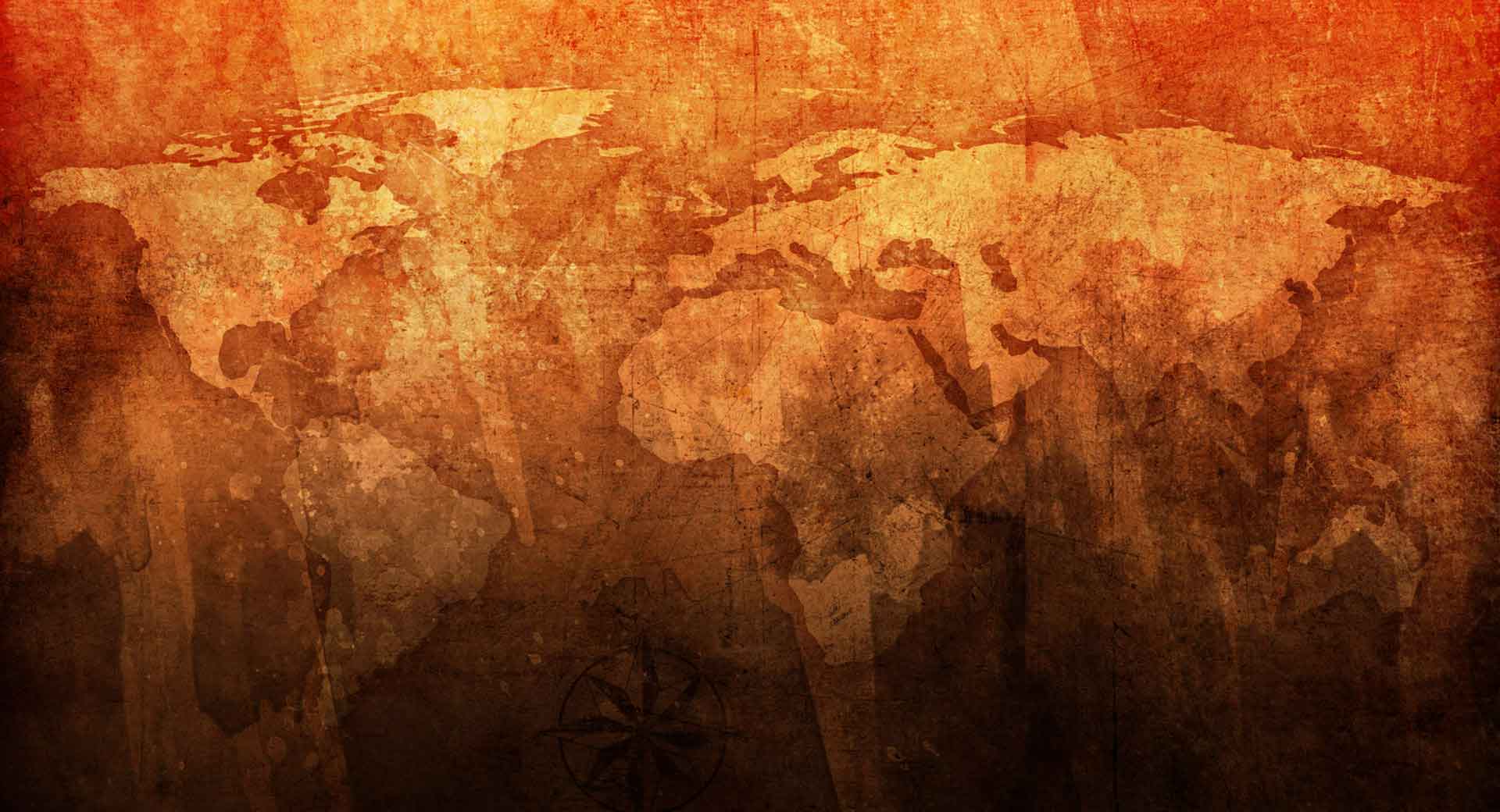Let’s continue to highlight some critical nuggets so that you can get the most out of the prophetic book of Daniel!
In Part 1, I wrote about the theme of Daniel and provided some background information. In this—Part 2—let’s do a deep dive into chapter 7, which begins the prophetic section of Daniel. The events in chapter 7 occurred during the first year of the Persian king’s reign, which was 553 B.C. That means the events in chapter 7 occurred 14 years before chapter 5.
Nebuchadnezzar had been dead for years, and Daniel would have been in his late 60s. Chapter 7 is the first of four personal visions given to Daniel. They prophetically deal with what’s called “The Times of the Gentiles.” This vision parallels Daniel 2. Chapters 2 and 7 reveal four Gentile nations, one succeeding the other. The destruction of the fourth and last empire comes from the Messiah who will establish the Millennial Kingdom.
In contrast, the vision in Chapter 2 was given to a pagan king, and Daniel gave the interpretation. In Daniel 7, the vision is given directly to Daniel, and the interpretation comes from an angel. Chapter 2 provides the human perspective on the Times of the Gentiles, whereas Chapter 7 provides God’s perspective of the Times of the Gentiles.
Daniel is confused by the vision, so he requires an interpretation. What he sees are four monstrous nations that will harm the Jewish people. These four Gentile nations will inflict great suffering upon the Jewish people. This is why they are described as ferocious beasts. We do know the Jewish people will eventually overcome and the Messianic Kingdom will continue on forever.
As the Babylonian Empire was ending, and as the 70 years of captivity was also ending, Daniel expected life to return to normal. He would be shocked to discover that the suffering would continue well past the 70 years of Babylonian exile.
The Dream Visions
In Daniel 7, the first 14 verses are a dream broken into two parts: the Four Beasts in verses 1-8 and the Ancient of Days in verses 9-14.
The vision begins with verses 2-6—the great sea and the first of the four beasts. Verses 7-8 reveal the fourth beast and the Little Horn. Verses 9-12 are the Ancient of Days, which will be the second coming of the Messiah, and verses 13-14 are the establishment of His Kingdom.
The Great Sea in verses 2-3 was agitated. The four winds of heaven moved it. This was something more than a natural movement. The winds swept across the sea and caused the water to be greatly disturbed. Often in Scripture, the Great Sea refers to the Mediterranean Sea (Joshua 1:4, 9:1, 15:12, 23:4, Ezekiel 47:10, 15, 48:28). However, the word “sea” is also used symbolically to refer to the Gentile world. (Isaiah 17:12, Matthew 13:47, Rev 13:1, 17:1). Because we know the theme of this book, the Great Sea in Daniel 7:2 represents the Gentile World. Verse 3 is about the four monstrous creatures rising from the Great Sea. This vision parallels the four empires of Nebuchadnezzar’s dream and these four beasts refer to four Gentile empires.
The First Beast
In verse 4, Daniel sees the first beast. In Nebuchadnezzar’s dream, the first kingdom was Babylon, pictured as the head of gold. In Daniel’s dream, the first kingdom is represented by a lion, the king of the beasts. This symbolizes Babylon (Jeremiah 4:7, 49:19, 50:17, 44.) However, this was not a normal lion, for it had eagle wings. This is another symbol of Babylon. (Jeremiah 48:40, 49:22, Ezekiel 17:3. In Babylon, the famous Ishtar Gate had depictions of lions with wings. The lion represents the king of the beasts and the eagle represents the king of the birds.
Daniel is shown some unique aspects of the lion. Its wings were plucked, meaning its downfall was assured. It was lifted up from the earth, it was made to stand on two feet like a man, and it was given a man’s heart. This describes Nebuchadnezzar’s experience in Chapter 4. Nebuchadnezzar was called a lion in Jeremiah 49:19 and 50:44. His army was known for its speed, and because of this, Ezekiel described him as having the wings of an eagle (Ezekiel 17:3,7). Babylon’s representation as a lion was for its great power. Its representation as an eagle was for its arrogance.
The Second Beast
Verse 5 reveals the second beast, which was a bear-like beast, with three ribs in its mouth. This beast parallels Nebuchadnezzar’s dream of the two arms and chest of silver. This is one nation merged from two nations (the Medes and Persia). Persia became the dominant power, which is why Daniel sees the bear as raised up on one side. One side is stronger than the other. The bear is less majestic than the lion, and its bulky body is less graceful and agile.
A bear moves slower than a lion, which was true about Persia as they moved slower than Babylon. The decrease in speed was due to its larger size. The three ribs in the bear’s mouth represent three historic conquests: Lydia in 546 B.C., Babylon in 539 B.C. and Egypt in 525 B.C.
The Third Beast
In verse 6, the third beast is a leopard with four wings on its back. This beast parallels Nebuchadnezzar’s dream of the bronze belly and thighs of the statue. We know this is the Greek Empire (Jer. 5:6, Hos. 13:7, Hab. 1:8) The leopard is less majestic than the lion and less grand than the bear, but it is faster than both.
Its four wings would make it twice as fast as the two-winged lion. This is precisely what happened in history. Greece, under Alexander the Great, moved and conquered nations quickly. Within four years, Alexander the Great conquered the entire Medo-Persian empire, including Egypt, Syria, and Israel. Within six years, he conquered more than 11,000 miles of territory from Greece in the west to the border of India in the east.
In addition to four wings, it had four heads representing the four generals—Lysimachus, Cassander, Ptolemy, Seleucus—who divided up the kingdom. The Greek Empire, which began as one unit, split into four divisions after Alexander’s death in 323 B. C. Two of the generals—Ptolemy and Seleucus—had direct influence over Israel.
The Fourth Beast
The first three creatures were not animals. They were like animals. However, the fourth creature was so extraordinary that Daniel refrained from attempting to describe it. There was something radically different about this beast, for it was far more ferocious than the others.
The fourth creature parallels Nebuchadnezzar’s dream of iron legs and feet. The fourth empire underwent multiple stages, which are described in Chapter 2. There was the united stage, which the Roman Empire fulfilled. Then, a two-division stage, a ten-horn, and a Little Horn stage, and finally, a ten-division stage.
Daniel did not compare this fourth beast to any animal other than to say it was “terrible and powerful and strong.” It had teeth that would not conquer. Instead, it would crush every nation. It devoured and broke its enemies into pieces. Just as consumed food became part of the body, nations would become part of the Roman Empire. The Roman Empire was unique in this way in that it would conquer nations and incorporate those people into its society. They freely granted Roman citizenship to outsiders to Romanize them and turn them into willing participants versus becoming enemies. The Romans called this system “Divide and Rule.”
The ten horns on the fourth beast correspond to the ten toes of Nebuchadnezzar’s dream. This last kingdom started as one (Babylon), but was divided into two (Medes and Persia), and eventually into ten.
The Little Horn
In verse 8, Daniel sees an eleventh horn on the head of the fourth beast. This horn was much smaller than the others, yet it had strength. It uprooted the other ten horns. This horn was distinct in that it had human characteristics. It had the eyes of man and a mouth speaking blasphemous things. Eventually, this Little Horn will remove three of the original ten horns.
The Third Vision
From verses 9 to 12, the focus of this revelation moves from Earth to Heaven and from the Little Horn to the Ancient of Days (vs. 9-10). Verse 11 reveals the destruction of the fourth beast.
Daniel is no longer on earth but in Heaven. He saw the angelic court preparing to begin proceedings in a heavenly courtroom (1 Kings 22:19, 2 Chron. 18:18). The Ancient of Days is a title that appears three times here in Daniel 7 (9, 13, 22). Psalm 55:19 describes God as “One who sits enthroned from Ancient Times.” His garment was white as snow, which represents His holiness. His hair was like pure wool, which represents His purity. (Isaiah 1:18) God’s throne was made of fiery flames, which in Scripture, fire represents the presence of God. We see His Shekinah Glory (Ex. 3:2, 19:16, 18; Deut. 33:2) as a symbol of judgment (Deut. 4:24, Ps. 97:1-5). Like Ezekiel (1:13-21), Daniel speaks of the fiery throne having wheels, and they too were burning with fire.
Verse 10 moves into the topic of divine judgment. A river of fire was streaming forth before the Ancient of Days, emphasizing the courtroom scene. Angels were serving the Ancient of Days. There were so many angels that Daniel could not count them. They stood before the throne, ready to receive commands from God to carry out judgments.
Verse 11 moves into the destruction of the fourth beast, and verse 12 moves into the end of the other three beasts. Their dominion ended when the Babylonians, Medes-Persians, and Greeks were defeated. Their empires ceased, but their nation continued. The Babylonian empire ceased to exist, but the nation of Babylon continued. The Persian empire ceased to exist, but the nation of Persia continued. The Greek empire ceased to exist, but the nation of Greece continued. The fourth empire, however, will be replaced by the Kingdom of God.
In Verses 13 and 14, the scene shifts from a courtroom to the description of Jesus’ Second Coming. This describes the setting up of God’s kingdom. Verse 13 is His Second Coming, and verse 14 is the Messianic Kingdom. In the book of Acts, when Jesus ascended into Heaven, He did so with the clouds (Acts 1:9). Verse 13 explains in like manner, He will return with the clouds of heaven (Psalm 18:11-12, Mt 24:30, Lk 21:27, Acts 1:11, Rev 1:7). Again, the term cloud represents God’s Glory. (Ex. 13:21, 40:35, 1 Kings 8:11, 2 Chron. 5:14, Ex. 10:4).
The Interpretation
Daniel made two requests for interpretation. The first request is in verses 15 and 16, and in verses 17-18 he receives the interpretation. The second request for an interpretation is in verses 19 to 22, and he receives that interpretation in verses 23 to 27.
The First Request
Verse 15 describes the effect that the four visions had on Daniel. Like Nebuchadnezzar in Chapter 2, Daniel was greatly troubled by what he had seen. He became terrified by his dream. The vision kept alarming him. In the heavenly court (Vs. 10), Daniel approached an angel and asked for an interpretation, which the angel provided.
The Kingdom of Man
The angel explained that the interpretation first deals with the kingdom of man (vs. 17). These great beasts (kingdoms) emerged from the sea, highlighting their Gentile identity, and originating from the earth, highlighting their humanity. This prophecy refers to human kingdoms ruled by man, not divine kingdoms. The angel established a connection between Daniel’s vision and Nebuchadnezzar’s dream. The four empires the king saw in Chapter 2 were the same empires represented by beasts in Daniel’s vision.
The Second Request
The angel’s response did not satisfy Daniel’s question about the fourth beast, and especially about the Little Horn, which gave him the most trouble. Daniel wanted to know more about the ten horns and the emergence of the eleventh horn.
In verses 19 to 22, he saw the Little Horn was waging war against the Jewish people, and for a time, it was successful and defeated them (vs. 21). However, verse 22 confirms the end of the Little Horn was guaranteed.
When Rome conquered the Greek Empire, it did so as a united force. Later, this empire split into two—a Western and an Eastern power. However, in the first stage, it was united; this was the Roman Empire. What made it different from all preceding empires was its policy of Imperialism. When Babylon conquered other nations, it did not install Babylonians as their rulers; instead, the empire selected leaders from among the conquered people and placed them in positions of influence.
When Nebuchadnezzar destroyed Jerusalem, he chose a Jew to rule over the province of Judah rather than a Babylonian (Jer 41:2-3, 52:30). The Medo-Persians used the same strategy, choosing leaders from the defeated country. Zerubbabel, being from Israel, is an example. He was appointed Israel’s governor by the Medo-Persians (1 Chron. 3:19, Hag. 1:1). Nehemiah is another example (Neh. 5:1-19). They were Jews under Persian rule.
The Greeks utilized the same method. Under Greek rule, Jewish high priests became rulers of Judea. The Romans changed this. When they conquered a people, they incorporated them into the Roman culture, but they placed Roman authority over them. Pilate (Mt. 27:11-19, Lk. 23:13-14), Felix (Acts 23:23-24), and Festus (Acts 25:1-12) are examples of this. Rome instituted a new policy for dealing with conquered people. This policy is Imperialism and is what made the fourth kingdom different from its predecessors.
Verse 24 shows that the one-world government stage will be followed by the ten-division stage, which will be global. The ten kings will not rule in succession. If that were the case, the small horn would need only to subdue the last king.
Verse 25 prophecies: “He will speak against the Most High and oppress his holy people and try to change the set times and the laws. The holy people will be delivered into his hands for a time, times, and half a time.”
Here, the angel provides some new information regarding the Little Horn (who will be the Antichrist). He will attempt to “change the set times and the laws.” Meaning, he will attempt to alter the biblical feasts, as did Jeroboam (1 Kings 12:28-33). He will also try to change the civil law and the Law of Moses.
The angel explains, “The holy people will be delivered into his hands for a time…” This means the Jewish people (and Christians) for 3 ½ years (1,260 days or 42 months) will be delivered to the Little Horn for persecution (Rev. 11:2-3, 6). This is the second half of the Tribulation.
The Kingdom of God
Verse 26 promises the Little Horn will fall. Its dominion will be taken away and destroyed forever. Verse 27 confirms Jesus will be King and His Kingdom will be eternal.
Verse 28 reveals the impact the vision had on Daniel. He was still troubled. He “keeps everything in his heart,” meaning he documented his experiences but did not share his thoughts.
Maranatha, Lord Jesus!






